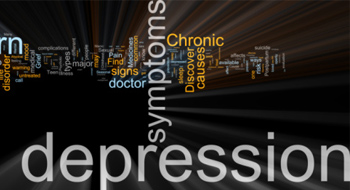

Today’s workplace is changing and more focus is being put on the psychological health of employees.
“We use to primarily use our backs for work and the interest in the healthcare field and employee rights was about injury. Now that we are more of a knowledge based society, the injuries are physiological more often–or as at least as often—as they are physical. [Workplace mental health] became an issue because it’s not clearly delineated,” says Mary Ann Baynton, an independent consultant in the field of mental health with Mary Ann Baynton & Associates.
On June 16 the Mental Health Commission of Canada (MHCC) announced that it will work to create voluntary national standards that will help employers improve the mental states of their workplace. At the same, the federal government time announced its support for this move and will contribute $320,000 to the Mental Health Commission of Canada through a partnership between Human Resources and Skills Development Canada, Health Canada and the Public Health Agency of Canada
“More than ever before, workplace health and safety must include psychological health and safety,” said Dr. Kellie Leitch, Member of Parliament for Simcoe-Grey and Parliamentary Secretary to the Lisa Raitt, Minister of Labour, and to Diane Finley, Minister of Human Resources and Skills Development.
Although these standards will be voluntary, those in the industry see them as a positive move.
Baynton points out mandatory standards would be just another hoop for employers to jump through. “[Mandatory standards] can end up being a burden that people look to do a minimum amount, just enough. The standards are intended to be best practice, for people who want to do the best they can to provide a psychologically healthy environment.
Jonathan Winston, regional vice-president with ComPsych says, these standards are a start. “I think we need to put a line in the sand in Canada and begin to understand what we need to do to understand mental health.”
Karen Seward, executive vice-president, business development and marketing with MorneauShepell adds that she is often asked whose responsibility workplace mental health is. Is it the employer’s responsibility or the employees’? Or both? She says these standards will help define the responsibilities of all the parties and define what a psychologically healthy workplace is. “There’s a role for employers and role for employees in mental health and these standards will help define those roles.”
A shift in thinking
Employers have been working to improve the health of their workplaces for years. Ask any employer what they’ve been doing and they can likely give a list of their health initiative and brochures about their employee assistance program. But the recent research findings show that merely having these programs, giving employees a booklet outlining them on the first day of work or having the details listed on an office intranet isn’t enough. It’s not working.
A Conference Board study released this week shows that 78% of short-term disability claims and 67% of long-term disability claims in Canada between 2009 and 2010 were related to mental health issues. It also found that 44% of the employees surveyed reported that they either were currently (12%) or had previously (32%) experienced a mental health issue.
MHCC president and CEO Louise Bradley puts these stats into something those controlling the purse strings can understand. , “The economic burden of mental disorders in Canada has been estimated at $51 billion per year, with almost $20 billion of that coming from workplace losses.”
“We’ve struggled for a long time to understand just how many people are affected by mental health [problems] and up until now, we’ve been focusing on the dollars and cents,” says Seward. “The issue is much bigger than we thought, more people are affected than we thought, and that’s the real shift that has happened.”
Taking action
Public comment on the standards will open later this fall, with a draft to be completed by March 2012. It’s expected that the final standards will be released in June of next year. Until then, what should employers be doing?
They need to first educate themselves on the resources available. Guarding Minds @ Work and The Great-West Life Centre for Mental Health are both free resources that can be utilized.
Once employers know what’s available to them, it’s critical to pass this knowledge on to employees.
Employers should:
- better educate employees on the resources that are available, both inside the organization and in the community;
- ensure that front line managers are aware of the resources and give them proper training on how to help employees in the workplace who may be struggling with a mental health issue; and
- utilize your benefits plan and EAP providers to ensure you’re getting as much as you can out of your programs.
